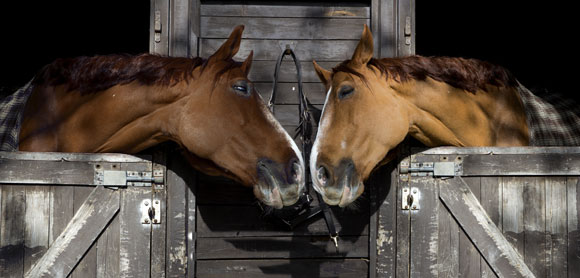
How to introduce a new horse to your herd safely
Turning a new horse out into an established herd for the first time can be a daunting prospect. But there are lots of ways you can make it less stressful for the horses and humans involved. Equine behaviourist Justine Harrison explains how to make the process as smooth and injury-free as possible.
Whether you’re bringing a new horse home, or moving them to a new yard, they will eventually need to be introduced to new horses in the field. So, what should you consider beforehand and how can you prepare to make the experience a good one?
“There is an increased risk of aggression when introducing a new horse to an existing herd, so it is vital to manage introductions and reduce any risk of injury,” advises equine behaviourist Justine Harrison. “The whole herd will be very affected by the arrival of a new horse, so it is important to ensure that all horses are physically healthy - sound, up to date with vaccinations, and free of contagious diseases.”
Quarantine new horses
To prevent the spread of disease, it’s best to quarantine the new horse (keeping them away from other horses) for at least ten days. Newcomers should always be able to see other horses, even if they are isolated.
Find out more about identifying the signs of a poorly horse.
Allow enough space
Another consideration is how big the field is and whether there is enough space. There should be at least one acre per horse.
“Horses will fight over limited resources (also called resource guarding), so maximise the resources available such as space, food, the gate, water troughs and shelter,” explains Justine. “Think of the amount of space available for a horse to escape others, and potential escape routes for you to remove horses safely if anything goes wrong.”
Look out for subtle signs that your horse may be injured and make sure your equine first aid kit is stocked up just in case.
What to do when a new horse arrives
- Explore their new field together. If you can, move the resident horses from the field that your new horse will live in and walk your horse around their new field in hand. Walk along the fence line, showing them the water trough and any feeding stations. You can then turn them loose to allow them to explore the area on their own. This is a great way to help them find their bearings without the added pressure of socialising with a new herd.
- Start introductions at the weekend. Plan to start any introductions when all the owners can be around to keep an eye on things and move their horses if necessary.
- Introduce over the fence first. Turning newcomers out in an adjacent field for the first few days lets horses meet over the fence safety. Make sure they’ve all been fed to reduce any food-related anxiety.
- Start with a buddy. Do you have a friendly, well-socialised horse in the herd that you could turn out with them first? If so, put the two of them in the field together and give them time to make friends.
- Bring the herd back gradually. If possible, introduce herd members to the field one or two at a time every couple of days.
- Watch how the horses interact. Ideally, you want to wait until the horses are happily grazing next to each other on either side of the fence, or mutually grooming, before you put them together. You can use a temporary double fence, then take one line down as a next step in the introduction process.
- Keep an eye out for injuries. Once your horse is in their new herd, keep an eye out for any new injuries like bites, kicks, cuts, snotty noses, swellings and lameness, as well as unusual behaviour like lethargy and anxiety. Look out for any horses not eating or one horse staying clear of the others.
“With any introduction, the horses are likely to investigate the new arrival, squeal, posture and run about - this is normal,” says Justine. “If there is any sign of fighting, or anyone being chased repeatedly, you may need to remove the new horse and reconsider the arrangement.”
For more, check out our guides on reading horse behaviour and equine body language.
If the horses are kept stabled for periods every day then to some extent, they may revisit the introduction process each time they are turned out for a few days. They should settle after a few days, but do keep a watchful eye on their progress.
Mix and match horses
Think about individual temperaments when considering which horses to put together. Study your group and be aware of how each horse reacts to new members, and perhaps remove certain members until the dynamics have settled down.
“The step-by-step introduction process should work for mares, geldings and mixed-sex groups,” adds Justine. “However, if you have a gelding who was cut late, who can be sexually aggressive and perhaps herds or guards mares aggressively, this needs to be taken into account. Consider whether this horse could be kept with a smaller group to reduce the risk of any injuries or ongoing upset within the herd.”
What are the rules for introducing new horses in your yard? Share your experiences with us on Facebook.


